Creating a culture of belonging. What exactly does it mean? How is it defined? What stage are organisations at? What challenges lie ahead?
HPC recently held a virtual roundtable discussion with L&D leaders to facilitate debate around these key questions. Part of our ‘HPC Talks’ series, the session was led by HPC’s Fiona Claridge; Lillian Forsyth – Co-Founder & CEO of Lead with Equity; and Siobhan Sweeney – Diversity, Inclusion & Belonging Leader at HubSpot.
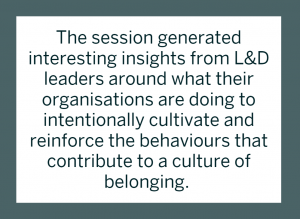
Based on their knowledge and work in the areas of diversity, inclusion and belonging, HPC invited Lillian and Siobhan to facilitate the conversation and give advice. The attendee group was made up of L&D leaders from a range of sectors who are at differing points in their ‘Diversity, Equity, Inclusion and Belonging’ (DEIB) journey.
We wanted to capture some of the themes of this discussion around how belonging is being driven and what is needed to create a more diverse and inclusive workplace.
What is Belonging?
Belonging is a word that has been swirling around the corporate world, especially in HR, L&D and Talent departments. It differs from diversity and inclusion in that just because someone is included in your organisation, certainly doesn’t mean they feel they belong. Belonging is when every individual is integrated into a culture where they feel welcome, connected, and celebrated.
In short, diversity is a fact (employee numbers), inclusion is a choice (you decide whether to include someone or not) but belonging is a feeling that can be enforced by a culture that can be purposefully created.
Through her work in this space, Lillian observes that, “Organisations have worked hard to increase the diversity of their teams and create inclusive cultures, yet there is still a way to go. Regardless of how diverse a workforce is, unless your people truly feel they belong, you’ll never realise the full potential of the talent you’ve worked so hard to attract.”
She explained that belonging is a powerful feeling; an additional force that is the product of a DEIB strategy. It’s a fundamental human need that translates across any language or culture, and a feeling that every human is wired to want.
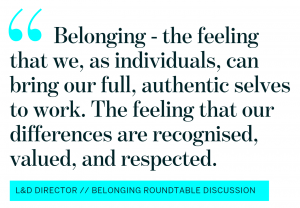
She firmly believes that “belonging gives all employees, regardless of background or difference, what they need to thrive at work.”
Some L&D leaders discussed the maturity of their organisational approach to belonging, while others are only starting their journey.
They commented:
“We don’t have an exact definition of belonging, but we do know what it is not. It’s about bringing your authentic self to work. We’re still defining our organisational stance on DE&I, then we will move to belonging.”
“I think it’s interesting that we’re all struggling with the definition of belonging and I think that’s because it’s going to look different in each organisation. For me, I think of belonging as the outcome – the product of what we do as D&I or L&D professionals. Diversity is what the organisation looks like. Inclusion and equity are the work, the strategies, the programmes we implement, and belonging is the result of those.”
“Our business has been involved in a large multinational takeover and many cultural differences exist. We were already considered as a diverse organisation but there is now more work to do on the DEIB front. We don’t have an official definition, but we are trying to put together a practical description. What we do know is that belonging is more about how you feel about being in an organisation, rather than a KPI.”
Alignment of DEIB Strategy
Siobhan’s previous roles in the area of DEIB at AIB, Open Doors and HubSpot have been largely focused on advising on alignment, driving internal initiatives and bringing all stakeholders together.
“It is important to take a holistic approach in aligning your organisation’s DEIB strategy with overall corporate priorities. Then creating awareness of these through employee integration will make it meaningful,” she says.
Some key takeaways from our discussion were:
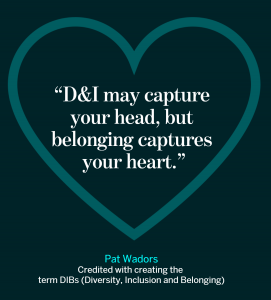
– DEIB should fit naturally into your corporate culture. Priority should be given to internal awareness building of DI&B so that it is lived through the culture on a daily basis. This behaviour is the cornerstone of inclusive companies.
– One participant observed that even though companies say have a DEIB policy, there is no meaning behind it. They publish it on their website and in company handbooks, but if belonging is not immersed in the corporate culture, it’s not real; they are just words that won’t make a difference.
– Organisations that treat DEIB as a ‘tick box’ exercise could experience some backfire. In this digital age, if a company does not fully commit to a genuine approach, this can be easily exposed on online sites such as Glassdoor. This may put potential employees off the organisation, which will ultimately affect talent retention.
– Some companies are more mature in their approach and have dedicated structures in place to instil DEIB within their organisation. If you are only beginning this journey, there are plenty of resources and support available once you have a framework that works for your organisation.
– Lillian stated that “for early and mid-stage start-up organisations in particular, there’s an opportunity to infuse inclusion, equity and belonging into your organisational systems as you establish them for the first time or change them to accommodate your organisation’s growth.”
– For smaller organisations who don’t have a dedicated DEIB role, you could assign additional roles to internal team members. This should be properly defined in their official job description and current responsibilities exchanged to accommodate this.
– Siobhan advised, “If you are starting out on the DEIB journey, start small. Choose a number of key initiatives and how they can be embedded into the everyday culture of your company. Reviewing and learning from them for constant evolution is critical.”
Measurement and Evaluation
– As well as defining belonging, organisations need to plan how to measure it. Siobhan suggested that to measure belonging, organisations could use retention analysis as a key indicator of success.
– We discussed short surveys that ask employees specifically about different elements of inclusion and belonging that act as a baseline indicator of progression in this area. Organisations who want to do this on their own can find online resources to put a survey together.
– Shorter pulse surveys on the topic can be conducted on a regular basis and paired with other data from a retention analysis. Together, this data can give an organisation a good sense of whether their initiatives around DEIB are working or not.
Organisational Direction & Engagement
– Top management and leadership should be leading the way in DEIB. They should foster the leadership style approach and behaviours that cultivate a culture of belonging and be accountable in terms of metrics and KPIs.
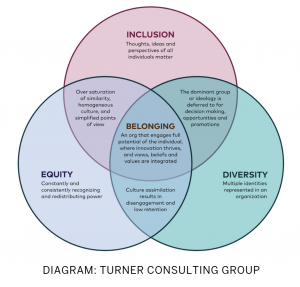
– When diversity, inclusion and equity coexist within teams, and throughout the wider organisations, an individual will feel a sense of belonging. Belonging is the outcome of these being present within the corporate culture – where everyone truly feels empowered to speak up, make change, and shift the culture. It is the responsibility of those in leadership and of the dominant social culture to create these conditions.
– Siobhan suggests that “organisations should adopt a bottom-up approach by encouraging initiatives to be employee-led. They should invite employee feedback and take it seriously. If survey fatigue kicks in, assign internal ambassadors to conduct formal ‘listening tours’ – to absorb feelings and ideas that come straight from the staff. In this way, employees will feel like they belong to something they value and that they have the power to bring about change when it’s needed.”
– A top-down and bottom-up approach allows the company to meet in the middle. Engagement between all important stakeholders – individuals, communities, and leaders – creates a space to ‘co-create’ a sense of belonging together.
The global Covid-19 pandemic
– The global events of 2020 and 2021 have increased the urgency for real change when it comes to DEIB. Leaders are recognising that hiring a diverse team is no longer enough; the pressure to integrate inclusion and belonging into every aspect of your organisation is higher than ever before.
– The impact of the pandemic, working from home and communicating virtually caused some people to re-evaluate themselves and ask if they actually belonged to their organisation. Some people have called out their organisation about their DEIB shortfalls or worse, left the company – and some organisations are struggling with that.
– Siobhan discussed HubSpot’s definition of DI&B and highlighted the importance of people having the ability to show up on a daily basis and be themselves. She explained that after the events of the pandemic, “80% of HubSpotters have opted for flexible/fully remote working, so we need to adapt and bring belonging to the virtual environment so that people can communicate, share thoughts, provide leadership and give feedback.”
– Due to Covid-19, inclusion has been more vital in supporting employee wellbeing, ensuring clear communication and helping employees stay connected to their teams.
– Post Covid-19 it is important that leaders ensure that inclusion does not just rely on visibility physically in the office in order to achieve progression. Inclusion needs to be all encompassing as some people are fully remote or working within a hybrid model.
In conclusion
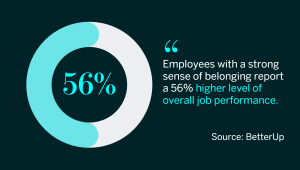
The power of a DEIB strategy goes much further in cultures where people feel they belong because when they’re seen, heard and valued for who they really are – their own unique and authentic selves – they thrive, and so does the organisation around them.
People who feel a greater sense of belonging at work, will be more resilient and willing to challenge themselves and others to be better stewards of equity, diversity and inclusion.
Lillian explains, “studies show that organisations where individuals hold a high sense of belonging produce more engaged employees who are energised by their work, better connected to their team, and ultimately perform with better creativity, execution and productivity. Belonging and performance outcomes are therefore linked.”
Our roundtable discussion showed that no matter how big or small an organisation is, or what stage they are at on their DEIB journey, everyone has the ability to be visionary and creative about the way they approach belonging. Driven from the bottom-up and top-down, a holistic, authentic and genuine approach will be the power behind this important journey.

This discussion was part of our HPC Talks series – a small quarterly forum to discuss topics and issues relevant to the world of L&D. If you would like to be kept informed of future events, please contact fiona.claridge@wearehpc.com
HPC Talks Contributors
Fiona Claridge – HPC

Fiona’s role as Client Director within HPC is to partner with organisations to shape bespoke people development solutions that achieve impactful results. She works in partnership with clients across a diverse range of industry sectors and offers a deep understanding of how ever-changing business needs impact how HPC’s work adds value at a strategic level.
HPC has been designing and delivering people development solutions for 40 years, partnering with clients to create a high-performance culture that has a positive impact on business growth and personal development.
Connect with Fiona on LinkedIn >>>
Connect with HPC on LinkedIn >>>
Lillian Forsyth – Lead with Equity
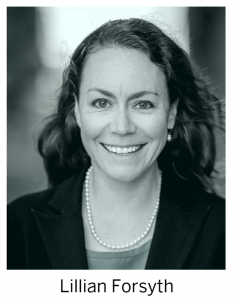
Lillian is an experienced coach and workshop facilitator in the areas of communications, leadership, and diversity, equity and inclusion. She has held communications, operations and human resources leadership roles with both for-profit and non-profit organisations.
Through her work she continually noticed a common theme: individual leaders and entire organisations struggling to engage, retain, and promote people from historically underrepresented backgrounds. This was the impetus for starting Lead with Equity, where her role is to help leaders to lead more effectively, inclusively, and equitably and to help organisations embed these skills into their leadership systems.
Connect with Lillian on LinkedIn >>>
Siobhan Sweeney – HubSpot
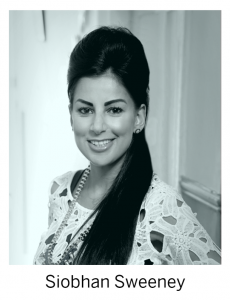
Prior to her current role as Diversity, Inclusion and Belonging Leader at HubSpot, Siobhan held a number of roles within AIB, including the role of Diversity and Inclusion Lead. She was also Director of Diversity and Inclusion with the Open Doors Initiative.
Siobhan is passionate about diversity and inclusion and the positive impact it has on both organisational performance and people. Working collaboratively and pragmatically with stakeholders, teams and diverse talent, her career purpose is to drive D,I&B through cultural change, to ensure talent attraction, development and retention. HubSpot’s DIB data can be viewed here.
Connect with Siobhan on LinkedIn >>>